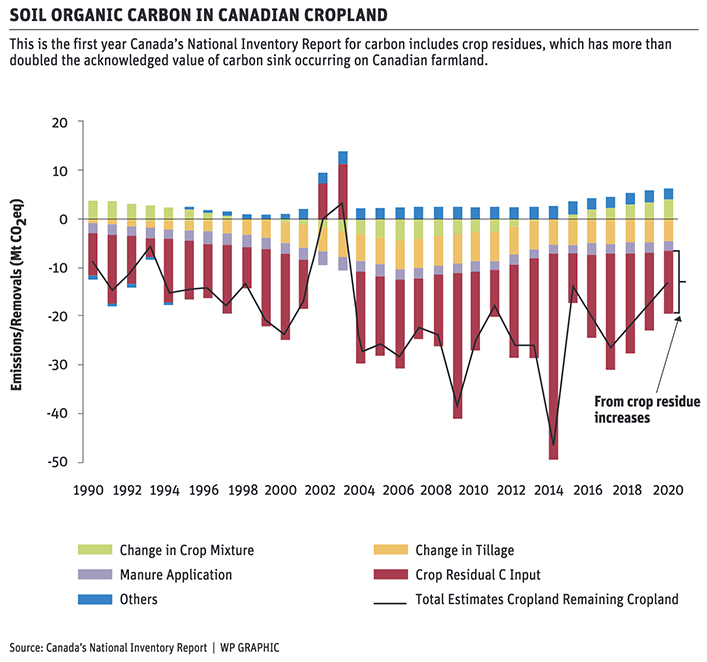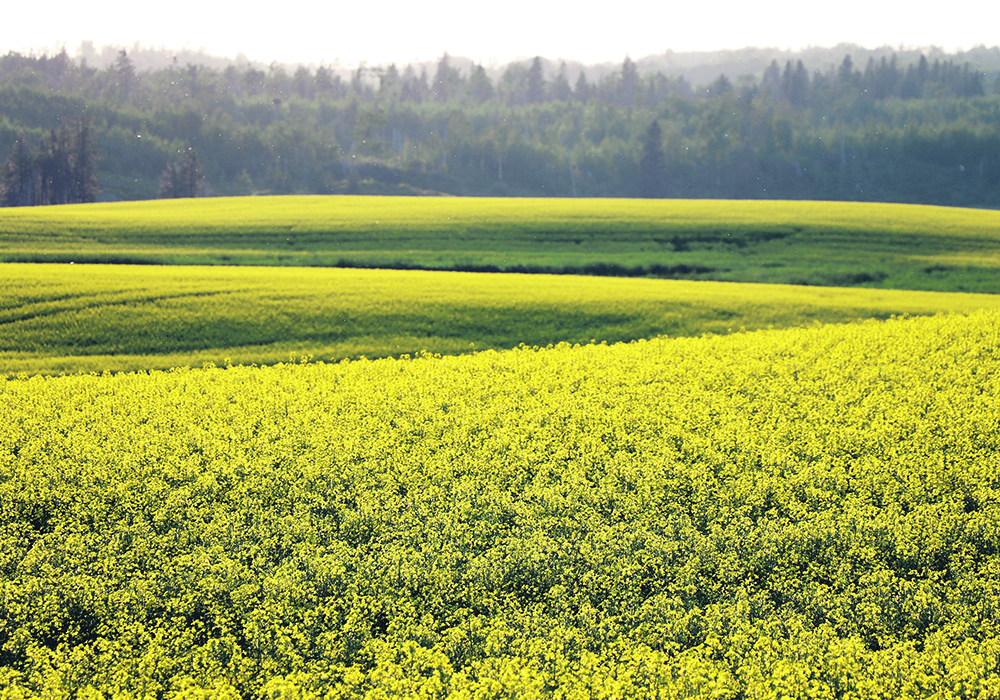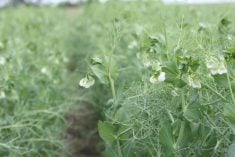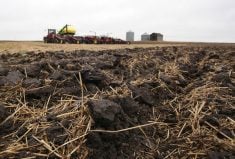Industry says accounting for soil organic carbon from crop residues helps ag reduce its net greenhouse gas emissions
Crop residues are now included in Canada’s national carbon inventory report, but more work needs to be done to recognize the climate mitigation benefits of growing canola, said Brian McConkey of Viesco Solutions.
He said the inclusion of crop residues in the carbon inventory report dwarfs other production changes, including tillage systems, when it comes to the amount of carbon sequestered by Canadian crops.
“If you compare the 2021 report, which didn’t include the impact of crop residue inputs versus the 2022 report for the same year, 2019, you can see that it’s more than doubled the amount of the sink that was occurring. That’s across Canada but most of that is in the Prairies,” McConkey said during Canola Week in Saskatoon Dec. 7.
“So, this really makes quite an impact then on the amount of soil carbon increases that are happening by including the carbon input.”
Because the 2021 Canada’s National Inventory Report did not consider the effect of crop residues, its calculations had the net sink for soil organic carbon in Canadian farmland in 2019 at 7.8 Mt of CO2.
In the 2022 report, which does include crop residues, the net sink for soil organic carbon in Canadian farmland in 2019 is 17 Mt of CO2.
Before moving to Viesco Solutions, McConkey worked at Agriculture Canada for 33 years at the research station in Swift Current, Sask., where he studied the carbon footprint of crops and cropping systems.
He said accounting for soil organic carbon from crop residues helps Canadian agriculture reduce its net greenhouse gas emission.
However, not all crops sequester carbon at the same rate and it’s important for the canola industry to be recognized for carbon the crop adds to Canadian soils.
Previous carbon footprint analysis done for canola, that didn’t include the carbon footprint of canola, was 383 kilograms of CO2 equivalent emissions per tonne of canola seed.
The Canadian Roundtable and sustainable crops, “just redid one for 2019, but now including the latest soil carbon increases. It decreased that carbon footprint down to 139 kilograms of CO2e (equivalent) per tonne of canola seed. So that’s a huge reduction. That’s really just from doing a better inclusion of the amount of soil organic carbon increase in prairie cropping systems,” McConkey said.
The mean carbon sequestration of canola crops in Alberta, from 2017-21, was 3.36 tonnes of C02 per hectare, while the average of all other crops were 2.79 tonnes of C02 per hectare.
In Saskatchewan, the mean carbon sequestration of canola crops during this time was 3.40 tonnes of C02 per hectare, while all other crops averaged 2.01 tonnes of C02 input per hectare.
In Manitoba, the mean carbon sequestration of canola crops during this time was 3.58 tonnes of C02 input per hectare, while all other crops averaged 2.7 tonnes of C02 input per hectare.
McConkey said the reason it’s important for the canola industry to be able account for all the carbon being sequestered by canola crops is because this would lower the crops carbon footprint even more, which is especially important when it’s used as a biofuel.
“The feedstock generally dominates the carbon footprint of the biofuel. The value of carbon can be quite high. With the British Columbia Low Carbon Fuel Standard, the October 2022 value for a credit, which is like one ton of CO2 E (equivalent) average, was $447 and change per tonne of CO2 equivalent, and was as high as $519 during 2021.”
The national Clean Fuel Regulation operates similar carbon-intensity base methods as the B.C. Low Carbon Fuel Standard, which will increase demand for biofuels from feedstock with low carbon footprints.
He said canola also reflects sunlight better than some other crops.
The albedo effect is the ability of surfaces to reflect sunlight, with light-coloured surfaces returning a large part of the sun rays back to the atmosphere while dark surfaces absorb the rays from the sun and warm up more.
For instance, McConkey said planting a coniferous tree in a snowy place will usually cause more warming than any cooling effect caused by the CO2 removal from the growth of the tree.
Canola, especially during flowering, has a high albedo, meaning it reflects a large amount of sunlight back to the atmosphere.

A 2022 study, by Liu et al examined how the different albedo values between canola and wheat grown on the Prairies impacted the sun’s warming of the environment from 1990 to 2019.
“We’ve seen an increase in canola area since 2019. (The study examined) the impact of that on warming. It was 57 million tonnes of CO2 equivalent. Like that’s huge. It would be way more than that extra swelling out of carbon coming from the canola plant itself,” McConkey said.
“We don’t really think about the reflectance, and I don’t see anyone talking about it as a breeding objective. But obviously this can have a huge impact.”
The study also looked at the impact of no-till, because it also has a huge advantage by increasing the reflection from fields.
“That was equivalent to 180 million tonnes of CO2 e (equivalent) and so that is more than about double but the impact of reduced tillage on CO2 e simply from the carbon sequestration,” McConkey said.
“We keep thinking reduced tillage was important for global warming because of its impact on soil carbon, but actually it’s had a much bigger impact on cooling simply because it increased the reflectance.”
In the study, canola was more reflective compared to wheat over an entire year, but similar in reflectance to other crops like barley, lentil, and pea.
McConkey said radiative forces from albedo changes are not included in Canada’s National Carbon Inventory reporting, but they are important for land management.
“More work needs to be done to have these climate mitigation benefits recognized to extract the full value of canola,” McConkey said.
















